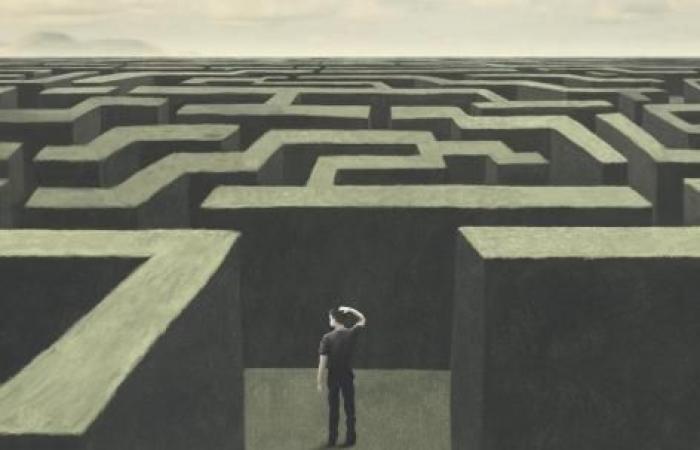Spatial navigation, the ability to follow a route from point A to point B, is a skill we use every day… but one that tends to diminish with age. This decline in sense of direction is generally attributed to a deterioration in spatial memory, due to brain changes naturally associated with aging.
According to a new study, published in the journal Frontiers in Aging Neurosciencethis decline would also be caused by the way we explore a new environment, which tends to change with age.
Spatial orientation tests in a virtual reality maze
To reach this conclusion, researchers at the University of California at Irvine (United States) conducted experiments on 87 middle-aged adults (50 years on average) and 50 young people aged 19 on average. None had a history of neurological illness, such as dementia, or psychiatric illness.
Participants were asked to explore and navigate a virtual reality maze, made up of crossroads and corridors, separated by hedges. Specific objects were scattered throughout the route at strategic locations serving as landmarks. During a first exploration phase, volunteers had to freely navigate the maze and learn the location of objects. During a second orientation phase, they had to apply what they had learned, by navigating between two randomly chosen objects in 45 seconds.
Unsurprisingly, young people had on average a higher success rate in finding their way. A difference in success “partly due to qualitative changes observed in how young and middle-aged participants learned the maze”according to a press release.
Middle-aged people explore new surroundings less than young people
“Compared to younger people, middle-aged people explored the maze environment less, because they traveled less distance, stopped longer at decision points and visited more objects”explain the researchers, specifying that “the differences were so notable that they were able to predict, via artificial intelligence, whether a participant was young or middle-aged”. Generally speaking, middle-aged people tended to “prioritize learning about specific locations within the maze, as opposed to the overall layout of the maze.”
“We are currently investigating whether these types of changes in exploration behavior can be identified in people at risk for or with Alzheimer’s disease,” conclude the authors of the study, estimating that such behavioral alteration “could become a new clinical marker of early cognitive decline linked to dementia”.






